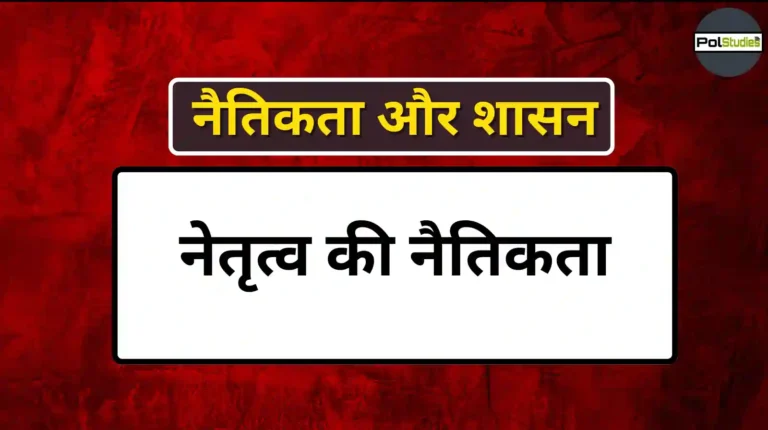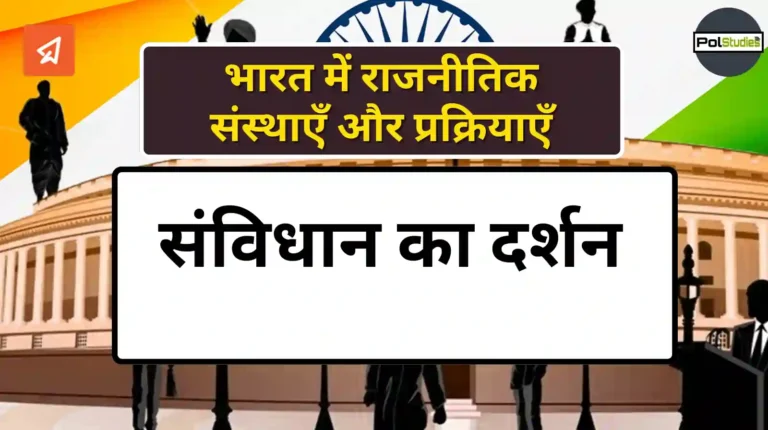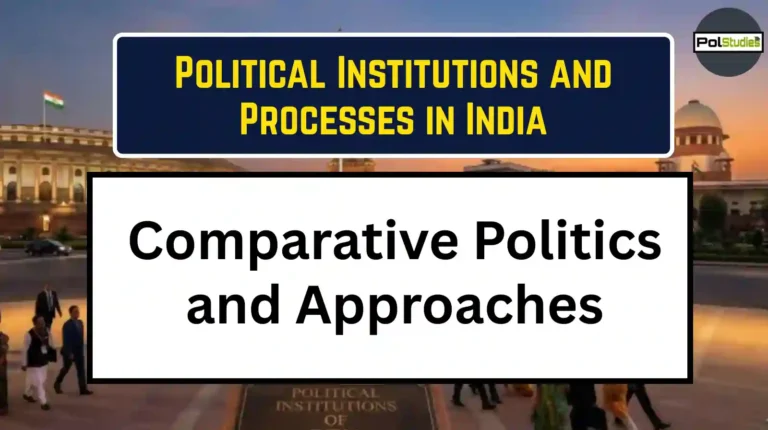Appointment of the Chief Justice and Controversy | Qualification, Tenure, Impeachment
Appointment and controversies on the post of Chief Justice
The Supreme Court in India acts as the protector of the constitution and the final interpreter of the constitution. The Supreme Court of India has extensive powers of judicial review. He can declare any law passed by the Parliament as invalid which is against the constitution.
On the basis of this power, he protects the sovereignty and supremacy of the constitution. He is the custodian of the fundamental rights of the citizens guaranteed by the constitution. He is the custodian of the fundamental rights of the citizens guaranteed by the famous constitution.
Renowned constitutionalist MC Setalvad has rightly written-“As the final interpreter of the Constitution whether it is in the field of fundamental rights or questions arising between the Union and the State and the field of rules based on all the laws and practices of the country Yes, it would be no exaggeration to stress the influence of the Supreme Court as an instrument of economic and social progress of the nation.”
The Supreme Court of India has extensive advisory powers and the President has on several occasions availed himself of the advice of the Supreme Court on laws and facts of public importance. M. V. Payali – “There is hardly any other court which has been given so much area, authority, and importance under the constitution.”
Composition of the Supreme Court
Originally, the Chief Justice and 7 other judges were arranged for the Supreme Court and the number of judges of the Supreme Court by the constitution, the jurisdiction of the Supreme Court, the salary and service conditions of the judges, and the right to decide has given.
The number of judges of the Supreme Court has been increased by amending the law from time to time by the Parliament. In 1985 it was stipulated by law that the Supreme Court would consist of a Chief Justice and 25 other judges. The judges of the Supreme Court are appointed by the President of India.
In appointing the judges of the Supreme Court, the President must consult the Chief Justice. When a special situation arises, the Chief Justice of India can appoint ad-hoc judges after obtaining the permission of the President of India.
In making such ad-hoc appointments, the Chief Justice of India shall consult the Chief Justice of the High Court from which the Judges are to be appointed. The appointment of ad-hoc judges in India is similar to the practice prevalent in Canada. An ex-officio judge of the Supreme or Federal Court can be made a judge of the Supreme Court with the prior approval of the President.
Appointment of the Chief Justice of India and Controversy about that
In relation to the appointment of the Chief Justice of the Supreme Court, from the time the constitution was implemented till 1972 AD, the tradition was going on that after the retirement of the Chief Justice, In relation to the appointment of the second Chief Justice, the President had to consult the retiring Chief Justice and this appointment was done on the basis of seniority of the judges.
Only once, in 1964, Mr. Zafar Imam was denied the post of Chief Justice of the Supreme Court despite his seniority, but this decision was made largely on the grounds of Mr. Zafar’s health, but in April 1973, when When Chief Justice Mr. Sikri retired, Mr. Ajitnath Ray was appointed as the Chief Justice by violating the seniority of three judges (Mr. Shelat, Mr. Hegde and Mr. Grover).
Mr. Sikri was not consulted regarding the appointment of Mr. Ajitnath Ray. This appointment was strongly opposed by the legal world of the whole country. Chief Justice Emeritus Shri Sikri responded that “The government decision was political. Mr. Chagla said, “This is the darkest day in judicial history.”
The Supreme Court Bar Association termed it purely political and has no relation to merits, but on the other hand, rendering the government’s side, Minister Mr. Kumaramangalam said in the Parliament that “the appointment of the Chief Justice is only on the basis of seniority.
The attitude of a judge, his social philosophy, his ability to sense the wind, and the recognition of the supremacy of Parliament should be the important criteria for appointment to the post of Supreme Justice.” It is up to the discretion to appoint a suitable person in his view.
The vision and philosophy of the person sitting on the highest judicial seat of the country should also be appropriate. Reacting sharply to this view, the eminent jurist Palkiwala said: “We must learn from experience that the entry of elements of justice into politics is proper, but the entry of politics into justice is disastrous.
How inconsistent is the claim of the government that it has to The court has the right to appoint judges who believe in the philosophy of the ruling party? Suppose a party comes to power whose ideology is against the constitution, then in such a situation the judges will follow the constitution or the philosophy of the ruling party. ”
In protest against this appointment, all three judges of the Supreme Court- Mr. Shelet, Mr. Hegde and Mr. Grover resigned. Suspicion was widely expressed throughout the country that this new government policy adopted in relation to the appointment of the Chief Justice and other judges would make the judiciary the cherry of the executive and this would hurt the independence and prestige of the judiciary. To consider the entire situation, an ‘All India Advocates’ Conference’ was held in Delhi on 11 and 12 August under the aegis of the Supreme Court Bar Association.
In about 700 delegates participated. The conference passed a resolution that the appointment of judges to the High and Supreme Courts should be made on the recommendations of the Bar Associations and committees representing judges and that the Chief Justice of the High Courts or the Supreme Court should be appointed. The above suggestion definitely deserves consideration from the point of view of maintaining the independence and respect of the judiciary.
In 1977, the Chief Justice was again appointed in the same manner as in 1973. On the expiry of the tenure of Chief Justice Shri Ajitnath Ray in January 1977, Shri H.R. Khanna should have been appointed to the post of Chief Justice, but instead of appointing Justice Khanna, Justice Mirza Hamidullah Baig was appointed to the post of Chief Justice. The appointment was criticized by the Supreme Court Bar Association and Justice H.R. Resigned by Khanna.
Appointment to the post of Chief Justice and settlement of the dispute (February 1978) –
In 1977, the ruling class was committed to maintaining the independence and prestige of the judiciary. Therefore, regarding the appointment to the post of Chief Justice. Re-accepting the principle of seniority in February 1978, Shri Y. V. Chandrachud was appointed. At the end of the tenure of Ajitnath Ray, some leaders of the then-ruling party and some eminent jurists said that Mr. Chandrachud should not be appointed to the post of Chief Justice. He said that the ideological independence and impartiality which is expected from the Chief Justice have been sadly lacking in him.
In April 1976, he did not give a courageous decision in the case of Habeas Corpus. B. According to M. Tarkunde, “The decision of the Supreme Court in the matter of habeas corpus is not only weak from the legal point of view, it is also full of serious danger for the public and the country. It is a mockery of the concept of justice.
Even by Mr. Chagla, A similar view was expressed, but rejecting such objections, it was thought by the government that certain conventions should be adopted in respect of appointment to the post of Chief Justice. This act of governance is to maintain the independence of the judiciary and its dignity. In
fact, some principles should be fixed in relation to the appointment of the Chief Justice and other judges, so that arbitrary behavior cannot be done by the government in relation to these supreme appointments in the judicial field, and the judgeship and the person holding the judgeship Do not become the subject of controversy.
The Law Commission has also said in its 80th report that the principle of seniority should be strictly followed in the appointment of the Chief Justice of the Supreme Court. And it is very necessary for the smooth functioning of democracy.
The present procedure regarding the appointment of a judge is provided in Article 124 of the Constitution that in the appointment of the Supreme Court, the President must consult the Chief Justice of India. There was a dispute about whether the President was bound to accept the advice of the Chief Justice alone.
For the resolution of this dispute, a reference was sent by the President to the Supreme Court in July 1998. Based on the decision taken by the Supreme Court on this reference on October 28, 1998, now the procedure for the appointment of judges of the Supreme Court and High Courts is as follows:
These appointments will be made by the President on the basis of advice received from the Supreme Court. The Chief Justice of the Supreme Court, before giving advice to the President in this context, shall obtain written advice from the ‘Group of Four Senior-most Judges’ and on the basis of this advice give advice to the President.
The Constitution Bench of the Supreme Court has said in its unanimous judgment that, “The group of senior-most judges should make a unanimous and written recommendation. No recommendation should be made by the Chief Justice to the President unless the opinion of the group of judges is in agreement with the view of the Chief Justice.”
The Supreme Court has made it clear that “If the Chief Justice of India completes the process of consultation without making recommendations to the President regarding the appointment of judges and transfer of judges of the High Courts, the Government is not bound to accept the such recommendation.”
Interference in judicial appointments
Recently, this fact has emerged that despite the ‘recommendation of the selection committee, the interference of Rashtrapati Bhavan in judicial appointments has started increasing. At the time of the appointment of four judges to the Supreme Court last year, President K. R. Narayanan had made this extraordinary remark on the file that there should be a reservation for SC/ST in appointments to the Supreme Court bench.
In this phase, the Rashtrapati Bhavan kept the proposal regarding the appointment of three judges in the Supreme Court pending for more than a month. But the present Judiciary, headed by Chief Justice Adarsh Sen Anand, is staunchly against executive tyranny in any form at any level, including the High Courts.
Qualification for the Judges
judges of the Supreme Court to have the following qualifications:
- He should be a citizen of India.
- He has served as a judge of a High Court or two or more such courts continuously for at least 5 years.
- Should have been an Advocate in any High Court or Courts continuously for 10 years.
- widen the field of appointment.
According to this provision, an eminent judge teaching in any university can be appointed as a judge in the Supreme Court. It is clearly written in the constitution that no judge of the Supreme Court can practice in any court or the court of any other official in the territory of India, nor can he act in any other way in any court.
Termand Impeachment
The retirement age of a Supreme Court Judge is 65 years. Although the system of life tenure in the Indian Constitution is practically the same as in the Constitution of the United States of America, considering the average age in India, the age of 65 years is a lot. Apart from this, a special provision has also been made in Article 128 of the Constitution to appoint a retired judge.
He himself can resign before this stage. Further, a Judge of the Supreme Court can be removed from his office only on the ground of proven misbehavior or incapacity. Parliament has the right to decide the procedure for such impeachment. Whatever may be the procedure, both the Houses of Parliament separately have to pass the resolution by a majority of their total number of members and two-thirds of the votes of the members present and voting and that proposal will be sent to the President.
After that, the President will issue an order for the removal of that judge. In this regard, it is necessary that the motion of impeachment against the judge should be accepted in the same session and the judge will be given full opportunity to support and defend his case.
Salary, Allowances, and Service Conditions
Judges of the Supreme Court shall be paid such salaries as may be determined by Parliament by law. On the basis of the High Court and Supreme Court Judges Service Conditions Amendment Bill, 1998, necessary reforms have been made in the salaries of these judges. Rs 33,000 per month has been fixed for the Chief Justice of the Supreme Court and Rs 30,000 per month for other judges.
This revised salary is payable to the judges from January 1, 1996. These judges also get a monthly allowance, traveling allowance, residential facility, staff car, limited amount of petrol and some other facilities. The system of pension and superannuation (Grechti) for judges was first introduced in 1976. Significant improvement has also been made in 198 service conditions. The maximum limit of pension is Rs.60,000 per annum for the Chief Justice and Rs.54,000 per annum for other judges.
Gratuity has been increased from Rs.30,000 to Rs.50,000. After the appointment of judges, no change can be made to their disadvantage in their allowances, etc. Salary and allowances will be given to them from the Consolidated Fund of India, on which the Parliament of India has no right.
Immunities-Judges were given freedom from criticism for all their actions and decisions, but any decision of the court or any opinion of a judge can be critically discussed from the academic point of view. The judge cannot be accused of giving a particular type of judgment out of any motivation or interest.
The conduct of the judges cannot be considered by the Parliament at any other time except when considering the motion of impeachment. The court is empowered to take contempt of court proceedings against any and the alleged offender in order to maintain its honor and protect itself from hostile criticism.
Read also:- Powers of the Supreme Court
In 1953, due to a comment made by ‘The Times of India’ on a decision of this court, proceedings for contempt of court were taken against the editor, printer and publisher of that newspaper. The action of contempt of court can be done not only to protect the dignity but also to prevent such an act, which is expected to adversely affect its power of impartial decision. A similar decision was given by the Supreme Court in Dixit v. State of Uttar Pradesh.
Establishment of the Supreme Court
Constitution, the Supreme Court has been given the right to keep its own establishment and also to have complete control over it. In this regard, the framers of the constitution were right in the opinion that if this type of system is not there, then the independence of the court will prove to be only an illusion.
All appointments of officers and employees of the Supreme Court are made by the Chief Justice or by any other judge or officer deputed by him for the purpose. The service conditions of these officials are also determined by this Court only, the expenses incurred on them and other expenses for the establishment of the Court are met by the Consolidated Fund of India.




